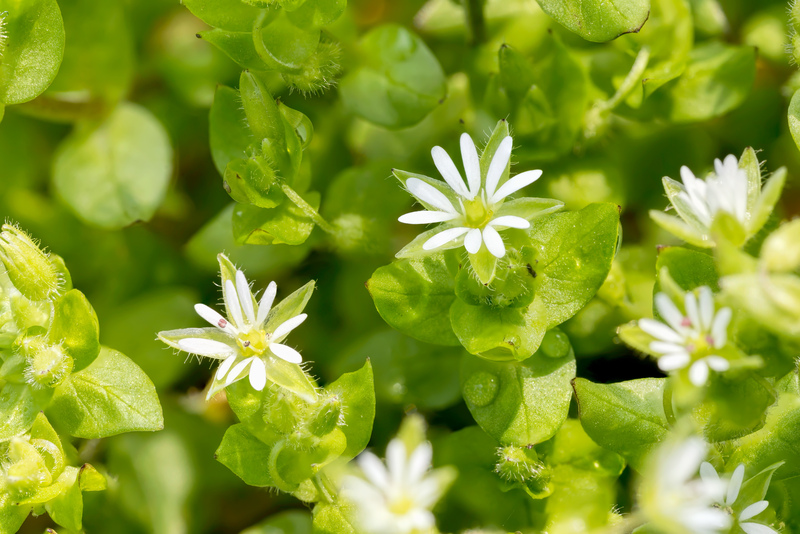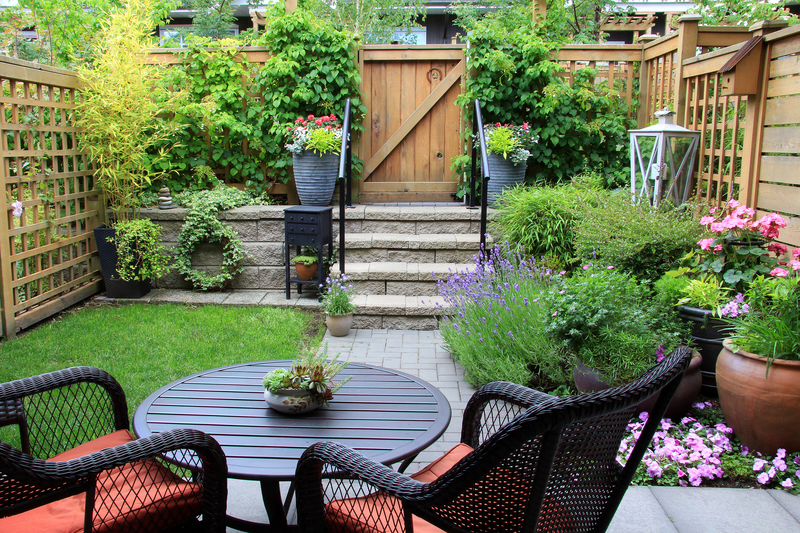Growing upwards: The rise of vertical gardening
Posted on 03/09/2025
Growing Upwards: The Rise of Vertical Gardening
Urban landscapes are shifting, with city dwellers enthusiastically embracing a green revolution--one that's heading straight up. Vertical gardening is rapidly gaining popularity worldwide as an innovative solution for bringing greenery into limited spaces. As more people recognize the benefits of these upward-growing oases, vertical gardening is transforming both private and public spaces, breathing life, color, and health into areas once dominated by concrete. In this comprehensive article, we'll explore the remarkable ascent of vertical gardening, its methods, benefits, challenges, and tips for success, making it your go-to guide for cultivating a flourishing vertical garden in your home or community.

What is Vertical Gardening?
Vertical gardening is the practice of growing plants in vertically stacked layers or on upright surfaces like walls and fences. Also known as living walls or green walls, this method maximizes available space by utilizing vertical rather than horizontal real estate. From residential balconies to expansive skyscraper facades, vertical gardens are redefining how we incorporate nature into our everyday environments.
Key Features of Vertical Gardening
- Space-saving: Ideal for apartments and small urban spaces.
- Aesthetic appeal: Enhance the visual allure of any environment.
- Fresh produce: Grow herbs, vegetables, and flowers even without a traditional garden.
- Improved air quality: Plants filter pollutants, improving indoor and outdoor air.
- Thermal insulation: Green walls can help regulate building temperatures.
The Evolution and Popularity of Vertical Gardens
Over recent decades, the vertical gardening trend has gone from a niche hobby to a widespread movement. Initially championed by botanists and eco-conscious architects, the concept is now seen in homes, businesses, public parks, and commercial complexes. Visionary projects, such as Patrick Blanc's iconic vertical gardens, have showcased how upward-growing flora can redefine urban spaces.
Why is Vertical Gardening Becoming So Popular?
- Urbanization: As cities grow, living spaces shrink. Vertical gardening offers a practical solution for city dwellers craving nature.
- Aesthetics: Green walls transform bland surfaces into visually stunning statements.
- Eco-friendly living: Growing plants vertically helps reduce carbon footprints.
- Health and well-being: Being surrounded by nature boosts moods and reduces stress.
- Sustainability: Vertical gardens can harvest rainwater and grow food, promoting sustainable lifestyles.
Types of Vertical Gardens
There are several primary types of vertical gardening systems, each suited to different needs, budgets, and environments:
1. Wall-mounted Vertical Gardens (Living Walls)
These consist of panels attached directly to walls, often with integrated irrigation and planting pockets. They're popular in offices, hotels, and upscale homes as dramatic, living works of art.
2. Trellis-Based Vertical Gardens
Traditional yet effective, trellises support climbing plants like beans, peas, and ivy. This method is simple, affordable, and well-suited for balconies or patios.
3. Freestanding Vertical Planters
Tower or ladder-style planters rest on the floor and can be moved where needed. They're perfect for renters or gardeners wishing to avoid permanent installations.
4. Pocket or Shoe Organizer Gardens
Repurposed fabric over-the-door organizers make great containers for herbs and small vegetables. They're an ingenious DIY vertical gardening solution for those on tight budgets.
5. Hydroponic Vertical Gardens
These high-tech systems support soilless growth and automated watering. They're increasingly popular for growing vegetables and herbs indoors, especially among urban gardeners keen on maximizing yields.
Benefits of Vertical Gardening
The rise of vertical gardening is marked by numerous tangible and intangible benefits. Here's why vertical gardens are taking root across the globe:
- Space Efficiency: Vertical gardens enable people with limited ground area to grow a surprisingly large number of plants. It's an ideal space-saving gardening solution for apartments and compact homes.
- Improved Air Quality: Plants in vertical gardens can help filter pollutants, capture dust, and contribute to a healthier living or working environment.
- Thermal Insulation and Energy Savings: Living walls can cool buildings by shading walls and absorbing heat, ultimately reducing air conditioning costs in the summer and lowering heating bills in winter.
- No Need for Weeding: Because plants are grown off the ground in containers or pockets, many common garden weeds are less problematic.
- Aesthetic Enhancements: Vertical gardens add a lush, natural look to bland buildings and walls, transforming them into vibrant, living artwork.
- Biodiversity: From pollinating insects to beneficial microbes, vertical gardens can support local ecosystems, even in dense urban areas.
- Increased Property Value: Properties with attractive, established vertical gardens are often viewed as more desirable, modern, and sustainable.
- Improved Mental Health: Numerous studies show that access to green spaces reduces stress, enhances creativity, and improves overall well-being.
- Grow Your Own Food: Vertical kitchen gardens can provide fresh, organic herbs and vegetables, right at your doorstep.
Challenges in Vertical Gardening
Despite its many benefits, vertical gardening does present some unique challenges:
- Structural Support: Walls or structures must be strong enough to support the weight of wet soil, plants, and frames.
- Irrigation Needs: Vertical gardens often need reliable watering systems, as pockets and planters can dry out faster than traditional ground beds.
- Pest Management: Some pests may thrive in the shelter provided by tightly-packed plant foliage.
- Plant Selection: Not all plants are well-suited for vertical growth. Selecting appropriate species is crucial to success.
- Initial Setup Cost: While DIY options can be affordable, professional installations may require significant investment, especially for large-scale living walls.
Getting Started: How to Create a Thriving Vertical Garden
1. Assess Your Space
Begin by identifying a suitable wall, fence, or space where you want your garden to grow up. Factor in sunlight, shade, wind exposure, and proximity to water sources.
2. Choose the Right Vertical Gardening System
Whether you opt for a simple trellis, a modular wall planter, or a high-tech hydroponic system, ensure it fits your intended location and budget.
3. Select Appropriate Plants
Choose species that thrive in your local climate and in vertical arrangements. Popular choices for vertical gardens include:
- Herbs like basil, mint, thyme, and cilantro.
- Leafy vegetables such as lettuce, spinach, and kale.
- Strawberries, succulents, and small flowering plants.
- Vining plants like beans and peas.
- Ornamental plants including ferns, ivies, and mosses.
4. Install Irrigation
Vertical gardens dry out faster than ground beds due to increased exposure to wind and sun. Consider installing a drip irrigation system or self-watering planters to optimize water usage and minimize maintenance.
5. Prepare Soil or Growing Medium
Ensure your selected medium is lightweight, rich in nutrients, and offers excellent drainage. For hydroponic gardens, follow manufacturer guidelines for nutrient solutions and substrates.
6. Plant and Maintain
Arrange plants according to their light and water needs; shade-loving varieties typically belong at the bottom, sun-loving plants at the top. Regularly monitor for pests, diseases, and nutrition levels for a thriving vertical garden.
Popular Vertical Gardening Ideas and Inspirations
- Living art pieces: Frame your vertical garden to create an ever-changing artwork for your living room or office lobby.
- Pallet gardens: Recycle old wooden pallets into rustic multi-layer planters for herbs and flowers.
- Kitchen herb walls: Grow fresh herbs right where you cook for flavor at your fingertips.
- Balcony privacy screens: Use a vertical garden as a green privacy wall to shield your balcony from prying eyes and urban noise.
- Commercial green facades: Many businesses use large-scale living walls to enhance customer experience and demonstrate sustainability commitments.

The Future of Vertical Gardening
As cities continue expanding and the world's population grows, space will become an even greater premium. The future of vertical gardening looks bright, with promising advancements in technology, sustainability, and design. Innovations such as smart sensors, automated hydroponic systems, and drought-resistant plant varieties will make creating and maintaining vertical gardens easier and more efficient.
In densely populated cities like Singapore, Tokyo, and New York, vertical urban farming is emerging as a solution for boosting local food production. Skyscrapers now house entire floors dedicated to growing leafy greens, herbs, and vegetables using vertical systems--reducing food miles, conserving water, and feeding local communities.
Sustainability, Well-being, and Beauty Combined
With their ability to improve air quality, conserve resources, and enrich our daily environments, vertical gardens will play a critical role in the future of green building and healthy urban living. Not merely a trend, this upward green movement is a cornerstone of sustainable landscape design.
Conclusion: Growing Upwards and Outwards
Vertical gardening is not only a clever response to urban space constraints but also a statement of our evolving relationship with the natural world. Whether for vegetables, herbs, or ornamental plants, growing upwards uses creativity and smart design to transform how, and where, we garden. As the global rise of vertical gardening continues, more individuals, businesses, and cities are discovering the joys and advantages of cultivating green walls--turning every bare surface into a canvas of life.
Now is the perfect time to join this upward movement--create your own vertical garden and watch your world grow greener, healthier, and more vibrant from the ground up!

